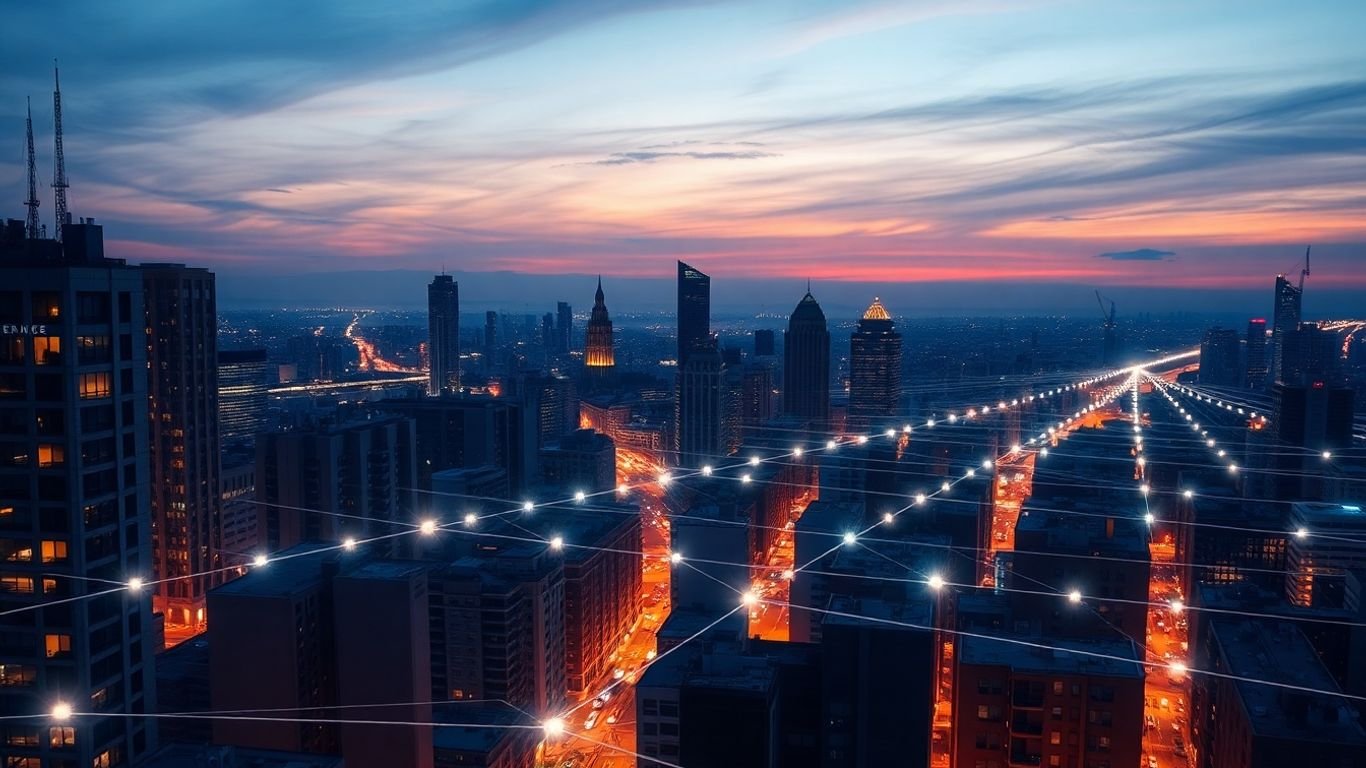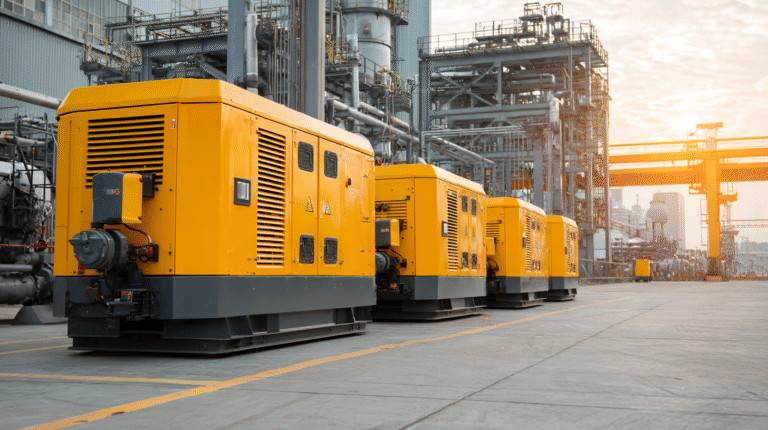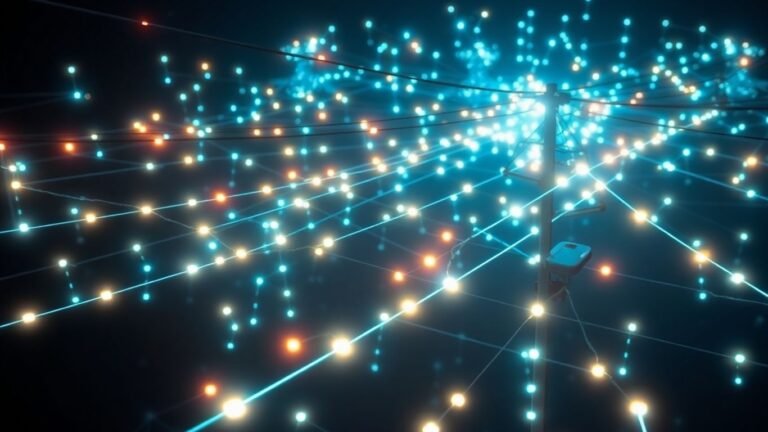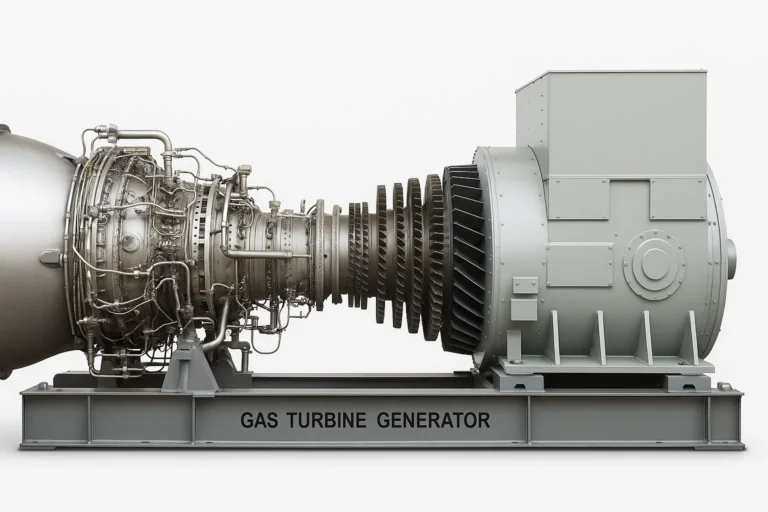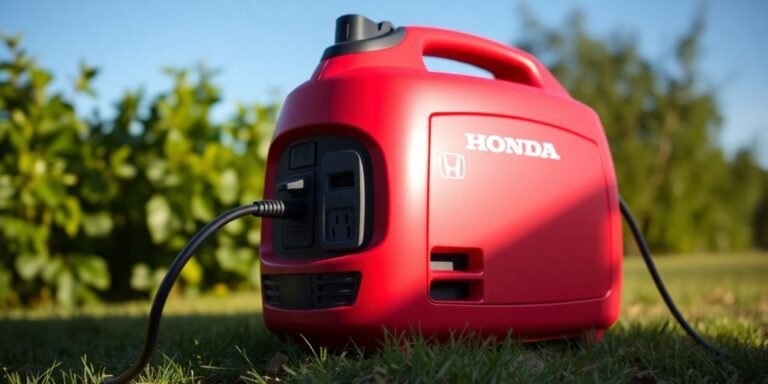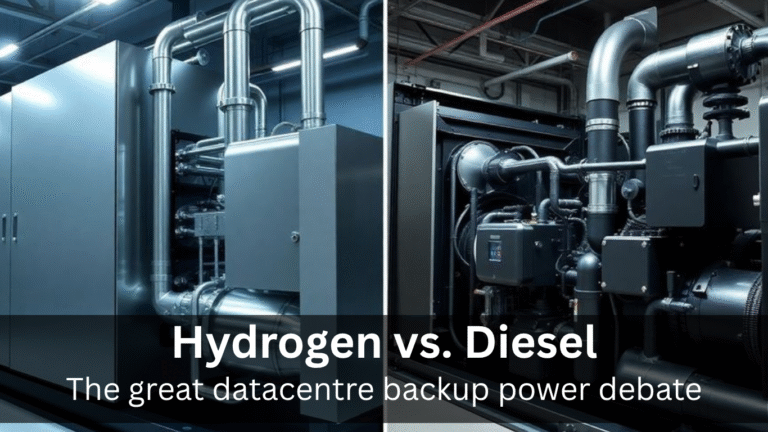What Is a Decentralized Grid and Why Is It Important?
The way we get our electricity is changing, and it’s happening faster than you might think. For a long time, power has come from big, central plants and traveled long distances. But now, new ideas and technologies are letting us generate and use power in smaller, local ways through what’s known as a decentralized grid. This shift toward a decentralized grid is creating a more flexible and resilient energy system. Let’s explore what this means and why it’s a big deal for all of us.
Key Takeaways
- The old way of getting power from big, central locations is changing. More and more, energy is being generated closer to where it’s used.
- A decentralized grid means power comes from many smaller sources, like solar panels on homes or local wind farms, instead of just a few huge power plants.
- This new approach makes the whole system more reliable. If one part has a problem, others can keep working, meaning fewer blackouts.
- Smart technology, like connected devices and blockchain, helps manage these many energy sources and makes trading power easier and more secure.
- Building this future grid isn’t just about new wires; it’s also about smart software, community involvement, and new ways of thinking about energy.
The Shift From Centralized Power

For a long time, the way we get electricity has been pretty much the same. Think of it like a giant, old-fashioned factory. Big power plants, usually burning coal or gas, make tons of electricity. Then, it travels through miles and miles of wires, big towers, and substations to get to our homes and businesses. This setup, called a centralized grid, was designed when electricity was a new thing, and the idea was to make as much as possible in one place and send it out. It worked okay for a while, especially when electricity use wasn’t growing too fast.
A System On The Verge Of Transformation
But things are changing, and fast. Our electricity needs are going up, partly because we’re using more electronics, and electric cars are becoming common. The old system just wasn’t built for this kind of demand. It’s like trying to push more water through the same old pipes – eventually, they just can’t handle it. The way we produce, distribute, and consume electricity has barely evolved since Thomas Edison’s time, but that is changing. We’re seeing a move towards a more flexible system where electricity can come from many different places, not just a few giant plants. This shift means we need to rethink how we manage power, and it’s a big deal for how we’ll live in the future.
Challenges In Traditional Energy Grids
There are a few big headaches with the old way of doing things. First off, sending electricity over long distances means some of it gets lost along the way. It’s estimated that around 5% of all electricity generated in the United States is lost simply through transmission and sending it through power lines. That’s a lot of wasted energy and money. Plus, these long lines are vulnerable. If a storm hits or something goes wrong in one spot, it can cause blackouts over a huge area. It’s a bit like having all your eggs in one basket. The infrastructure is also aging, and upgrading it to meet new demands is incredibly expensive and takes a long time.
The Current Energy Landscape
Today, the energy world is a mix of old and new. We still rely heavily on those big, central power plants, but we’re also seeing more and more smaller energy sources popping up. Think solar panels on rooftops, wind farms, and battery storage systems. These are often called distributed energy resources. They’re closer to where the electricity is actually used, which can make things more efficient. This changing landscape means the old, one-way flow of electricity from a few big producers to many consumers is becoming a more complex, two-way street. It’s a transition that promises more local control and resilience, moving away from the traditional hub and spoke model towards a more interconnected network.
- Energy Loss: Significant amounts of electricity are lost during long-distance transmission.
- Vulnerability: Centralized grids are susceptible to widespread outages from single points of failure.
- Aging Infrastructure: Much of the current grid infrastructure is old and requires costly upgrades.
- Growing Demand: Increasing electricity needs strain the capacity of the existing system.
The traditional energy grid, built for a different era, is facing unprecedented pressure. As demand climbs and new energy technologies emerge, the limitations of a centralized system are becoming increasingly apparent, paving the way for a fundamental transformation.
Understanding Decentralized Energy
The Rise Of Decentralised Energy
For a long time, the way we got our electricity was pretty much the same everywhere. Think of huge power plants, burning coal or gas, or using nuclear power. These giants would send electricity across the country through massive power lines. It was a one-way street: power plant to your house. But things are changing, and fast. We’re seeing more and more smaller energy sources popping up everywhere, from solar panels on rooftops to wind turbines in local fields. This shift is what we mean when we talk about the rise of decentralized energy. It’s like moving from one giant supermarket to a network of local farmers’ markets – more options, closer to home.
Definition Of Decentralized Energy Grids
So, what exactly is a decentralized energy grid? Instead of relying on one or a few big power stations, a decentralized grid is made up of many smaller, distributed energy sources. These can be anything from solar panels on your neighbor’s roof to a small wind farm down the road, or even battery storage systems. The key idea is that power is generated closer to where it’s used. This network of smaller generators can work together, sometimes even trading power directly with each other. It’s a more flexible and adaptable way to power our lives.
Decentralization And Energy: Changing How We Power Our Lives
This move towards decentralized energy is a pretty big deal. It means we’re not just passive consumers of electricity anymore. We can become active participants, generating our own power and even selling excess back to the grid. This is changing our relationship with energy, making us more aware of where our power comes from and how we use it. It’s about more than just electricity; it’s about energy independence and building a more sustainable future. Imagine a community where everyone contributes to the power supply, reducing reliance on distant, often polluting, power plants. That’s the future decentralized energy is helping to build.
- Local Generation: Power is produced close to where it’s consumed.
- Increased Choice: More options for where and how you get your energy.
- Active Participation: Individuals and communities can generate and share power.
- Sustainability Focus: Often tied to renewable energy sources, reducing carbon footprints.
The old way of doing things, with massive power plants sending electricity over long distances, is starting to show its age. A lot of energy gets lost just traveling through those long wires. Plus, when one of those big plants has a problem, or a storm knocks out a major line, everyone can lose power for a long time. Decentralized systems, with many smaller sources, are much better at handling these kinds of disruptions. If one small generator goes offline, the others can often pick up the slack, keeping the lights on.
The Power Of A Decentralized Grid
So, what’s the big deal about a decentralized grid? It’s basically about spreading out where our electricity comes from, instead of relying on just a few giant power plants. Think of it like having a bunch of smaller, local energy sources – solar panels on roofs, small wind turbines, or even battery storage systems – all working together. This approach is a game-changer for how we get our power.
Advantages Of Decentralized Energy Grids
This shift brings a lot of good stuff to the table. For starters, it makes things way more efficient. When you generate power closer to where you use it, you cut down on the energy lost when it travels long distances through power lines. It’s like not having to shout across a huge stadium to be heard; you can just talk to the person next to you.
- Reduced Transmission Losses: Less energy wasted means more bang for your buck.
- Lower Costs: Cutting out middlemen and streamlining how energy is bought and sold can save money for everyone.
- Increased Resilience: If one part of the grid has a problem, others can keep running.
Improved Efficiency
We touched on this, but it’s worth repeating. The old way of doing things meant a lot of energy just vanished into thin air (or, you know, power lines) on its way from the power plant to your house. Decentralized systems flip that. By having generation points scattered around, often right where the power is needed, we’re not sending electricity on a cross-country trip. This means more of the energy produced actually gets used, which is a win for both your wallet and the planet. It’s a smarter way to manage our energy resources.
Increased Reliability
Remember those massive blackouts that seem to happen every so often? A centralized grid is like a single point of failure. If that one big power plant goes down, or a major transmission line gets damaged, a whole lot of people lose power. It’s a bit like putting all your eggs in one basket. A decentralized grid, on the other hand, is much more robust. If one local energy source has an issue, the others can pick up the slack.
This makes the whole system much more dependable, especially when facing bad weather or other disruptions. It means fewer headaches for you and a more stable power supply for your community. This is especially important for places that have experienced grid failures firsthand, like what happened in Texas during that brutal winter storm. Having local generation means you’re not entirely at the mercy of a distant, potentially vulnerable, central system. It’s about building a more self-sufficient and dependable energy future, which is why many rural communities are looking into community energy projects.
The move towards decentralized energy isn’t just about technology; it’s about building a more resilient and responsive power system that benefits everyone. It’s about making sure the lights stay on, even when things get tough.
Key Technologies Enabling The Decentralized Grid
So, how do we actually make this whole decentralized grid thing work? It’s not magic, thankfully. A few key technologies are really stepping up to the plate, making it possible to move away from those old, clunky centralized systems. Think of it like upgrading from a rotary phone to a smartphone – a whole new world of possibilities opens up.
The Role Of Smart Devices
Smart devices are basically the eyes and ears of the new grid. We’re talking about things like smart meters in our homes, sensors on power lines, and even connected appliances. These gadgets can talk to each other and to the grid in real-time. This means we can see exactly how much energy is being used, where it’s coming from, and if there are any hiccups. This constant flow of information helps keep everything running smoothly and efficiently. It’s like having a super-detailed map of your energy usage, all updated by the second.
Blockchain Technology In Energy
This is where things get really interesting. Blockchain, the same tech behind cryptocurrencies, is a game-changer for energy. Imagine a digital ledger that’s shared across many computers. Every energy transaction – like me selling some extra solar power to my neighbor – gets recorded there. Because it’s shared and verified by everyone, it’s incredibly secure and transparent. No single person or company can mess with the records. This builds a lot of trust, which is pretty important when you’re dealing with something as vital as electricity. It’s a way to create a more honest and open energy market.
Smart Contracts And Peer-To-Peer Trading
Building on blockchain, smart contracts are like automated agreements. They’re pieces of code that automatically execute when certain conditions are met. In the energy world, this means if my solar panels produce more power than I need, a smart contract can automatically sell that excess to a neighbor who needs it, at a pre-agreed price. No paperwork, no waiting for approvals. This makes peer-to-peer energy trading super easy and efficient. It’s a big step towards giving individuals more control over their energy and creating local energy communities. This technology is fundamentally changing how we think about energy ownership and exchange.
The integration of these technologies means we’re moving towards an energy system that’s not just more resilient but also more democratic. People can participate directly, making choices about their energy use and even becoming producers themselves. It’s a shift from a top-down model to a more connected, community-driven approach.
Building The Future Grid
So, how do we actually put together this new kind of power system? It’s not just about slapping in some new gadgets; it’s about creating a whole new way of thinking about electricity. We need a smart grid, which sounds fancy, but really just means a grid that can talk to itself and make smart decisions. Think of it like upgrading from a rotary phone to a smartphone – suddenly, everything is connected and way more capable.
The Need For A Smart Grid
The grid we have now is kind of like an old, clunky computer. It works, but it’s slow, can’t handle too much at once, and doesn’t play well with new technology. A smart grid, on the other hand, is designed for the modern world. It uses digital communication to detect and react to changes almost instantly. This means it can manage all those new solar panels, batteries, and electric cars without breaking a sweat. It’s about making the grid more responsive and less prone to those annoying outages.
Accelerating Distributed Energy Assets
We’ve got all these smaller energy sources popping up everywhere – solar panels on roofs, community battery projects, even electric vehicles that can send power back to the grid. The challenge is getting them all to work together smoothly. We need to make it easier and faster to connect these distributed energy assets. This involves updating rules and making sure the technology can handle them. It’s like building more lanes on a highway to accommodate all the new cars.
Here’s a quick look at what needs to happen:
- Upgrade the digital infrastructure: The software and communication systems need a serious overhaul to handle two-way power flow and data.
- Streamline connections: Make it simpler for new renewable energy projects and storage to get hooked up to the grid.
- Develop new market rules: Create ways for these distributed assets to be properly valued and compensated for the services they provide.
The transition to a decentralized grid isn’t just about adding new pieces; it’s about orchestrating them. We need a system that can manage a complex dance of energy sources and demands, ensuring power flows where and when it’s needed, efficiently and reliably. This requires a sophisticated digital layer, much like the internet’s protocols, but for energy.
Future-Proofing The Energy Grid
Making the grid ready for what’s next means thinking ahead. We can’t just fix today’s problems; we need to build a system that can adapt to future technologies and demands. This includes investing in things like advanced transmission lines that can carry more power over longer distances with fewer losses, and large-scale energy storage to balance out the ups and downs of renewable sources. It’s about building a grid that’s not just reliable today, but resilient for decades to come. We’re essentially building the power grid of tomorrow today, making sure it can handle whatever comes its way.
Real-World Impact And Future Trends

Case Studies and Real-World Impact
We’re already seeing decentralized energy systems pop up all over the place. Think about communities that have set up their own microgrids, often powered by solar panels. These aren’t just theoretical ideas anymore; they’re actually working. For instance, some remote areas, especially in Africa and Asia, are skipping the traditional grid altogether and going straight for local solar solutions. In West Africa, for example, sales of solar energy kits have been really strong, showing a clear demand for this kind of setup. It’s a big step towards giving more people access to power.
Community Participation and Sustainability
One of the coolest things about decentralized energy is how it gets people involved. Instead of just being passive consumers, communities can actually produce their own power. This not only makes them more self-reliant but also helps the environment. When you have more local energy generation, especially from renewable sources, you cut down on the need for big, polluting power plants. It’s a win-win: people get reliable power, and the planet gets a break. This shift is really about empowering individuals and neighborhoods to take control of their energy future and contribute to a greener world.
Future Trends and Innovations
So, what’s next? Well, the technology isn’t standing still. We’re seeing a lot of exciting developments that will make decentralized grids even better. For starters, energy storage is getting a major upgrade. Batteries are becoming more efficient and cheaper, which means they can store more power for longer periods.
This is a big deal for handling the ups and downs of renewable energy sources like wind and solar. Plus, things like electric vehicles are becoming part of the grid, acting like mobile batteries that can even send power back when needed. It’s all about making the grid smarter, more flexible, and more resilient. The integration of artificial intelligence is also on the horizon, promising to optimize how we manage and distribute energy in ways we’re only just beginning to imagine. This evolution is key to building a truly modern and sustainable energy infrastructure for everyone.
The future of our energy system isn’t about replacing the old grid entirely, but about building new networks of decentralized assets around it. This means more people will be generating their own power, which will definitely shake things up for the traditional energy companies. Ultimately, people want power that’s reliable, affordable, and clean, and this new approach is all about delivering that.
The Road Ahead
So, what does all this mean for us? Basically, the way we get our electricity is changing, and it’s happening now. While the big power plants aren’t going anywhere overnight, smaller, local energy sources are popping up everywhere. Think solar panels on roofs, batteries in homes, and even bigger setups for businesses. This shift means we’ll have more control over our power, potentially lower bills, and a cleaner environment.
It’s not going to be a simple switch, and there will be bumps along the way, especially with making sure all these new systems talk to each other and stay safe from hackers. But the future looks like a more flexible, reliable, and community-driven energy system. It’s an exciting time, and if you’re building solutions in this space, now is the time to get involved.
Frequently Asked Questions
What is a decentralized energy grid?
Imagine instead of one giant power plant sending electricity everywhere, you have lots of smaller power sources, like solar panels on houses or small wind turbines, spread out. A decentralized energy grid is like a network of these smaller power sources working together, often with smart technology, to provide electricity. It’s a way to get power from many places close to where it’s used, instead of just from one big, central location.
Why is the energy grid changing from centralized to decentralized?
The old way of doing things, with just big power plants, is getting strained. Things like electric cars and more electronics mean we need more power, especially at busy times. Also, people want cleaner energy and to be more in control of their power. Decentralized grids, using sources like solar and batteries, offer a more flexible and potentially cleaner way to meet these new demands and make power more reliable.
What are the main benefits of a decentralized energy grid?
One big plus is better efficiency because electricity doesn’t have to travel as far, so less energy is lost. It’s also more reliable; if one small power source has a problem, the others can often keep things running. Plus, it can lead to lower costs for everyone and helps us use more clean energy sources, which is good for the planet.
What technology makes decentralized grids possible?
Smart devices, like smart meters and thermostats, are key. They help manage energy flow and communication. Blockchain technology is also important because it creates a secure and transparent way to track energy use and trades. Think of it like a super-secure digital ledger for energy.
Can I be a part of a decentralized energy grid?
Absolutely! If you have solar panels on your roof or a battery storage system, you’re already a part of it. You can even become a ‘prosumer,’ which means you produce your own energy and can sell extra back to the grid or to your neighbors. It’s about giving people more control over their energy.
Are there any downsides to decentralized energy grids?
While they offer many advantages, there are challenges. Making sure all these different systems can talk to each other and work together smoothly is complex. Also, connecting so many devices opens up new security concerns, like the risk of cyberattacks. We need to develop new rules and technologies to handle these issues as the grid evolves.

